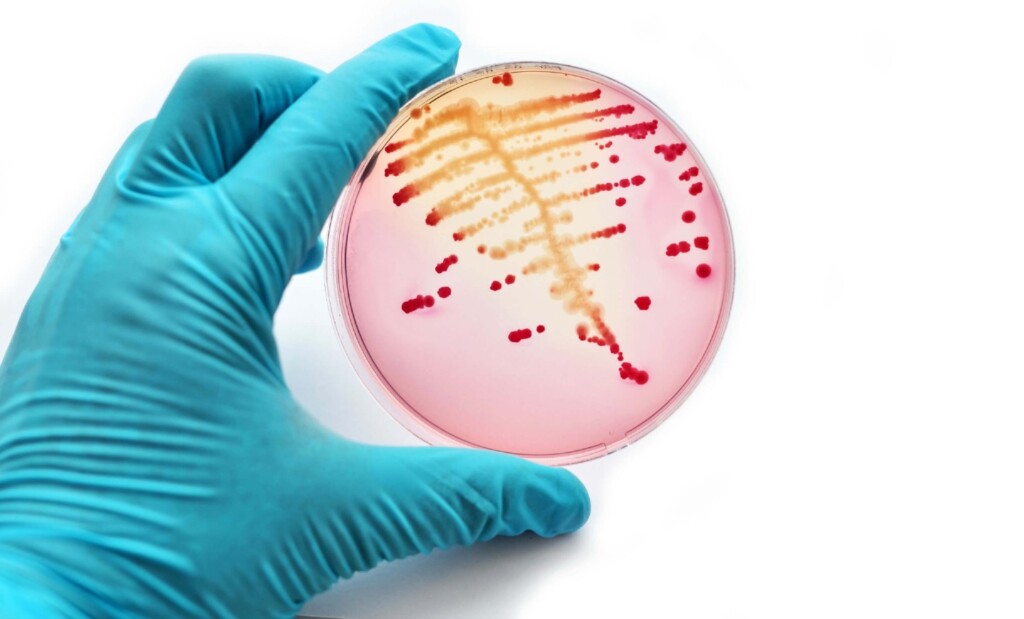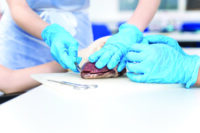These best practices will help you safely contain microorganisms in your lab.
Treat all microorganisms as potential pathogens. While the majority of microorganisms are not pathogenic to humans and have never been shown to cause illness, under unusual circumstances a few microorganisms that are not normally pathogenic can act as pathogens. Treat all microorganisms–especially unknown cultures–as if they are pathogenic. A student who has a compromised immune system or has had a recent extended illness should talk with the instructor before working in the microbiology laboratory.
Maintain a curated culture collection. The cultures should be obtained from authorized or commercial sources, such as the American Type Culture Collection; National Collection of Industrial, Food and Marine Research; or Carolina Biological Supply Company. Get a full list of authorized collections at World Federation for Culture Collections.
Obtain fresh stock cultures of microorganisms annually. Purchase bacteria or revive from frozen stock cultures. By refreshing annually, you’ll be certain of the source culture, minimize accumulation of spontaneous mutations, and reduce contamination.
Sterilize equipment and materials. All materials, media, tubes, plates, loops, needles, pipettes, and other items used for culturing microorganisms should be sterilized by autoclaving. Otherwise, use commercially sterilized products. Understand the operation and safe use of all equipment and materials needed for the laboratory.
Disinfect work areas before and after use. Use a disinfectant, such as a 10% bleach or 70% ethanol solution in safety-labeled wash bottles, to wipe down benches and work areas both before and after working with cultures. Also be aware of the possible dangers of the disinfectant, as 70% ethanol can catch fire around open flame or high heat sources. Bleach, if spilled, can ruin your clothing. Either alcohol or bleach can be dangerous if splashed in the eyes. Students should know where the nearest eyewash station and sink are located.
Wear protection. Wear goggles or glasses when handling liquid cultures or spread plating. Laboratory coats and gloves are strongly recommended. Keep all personal belongings (including cell phones) in a separate area. Wash your hands before handling these items.
Wash your hands. Use a disinfectant soap to wash your hands before and after working with microorganisms. Nondisinfectant soap will remove surface bacteria and can be used if disinfectant soap is not available. Gloves may be worn as extra protection.
Never pipette by mouth. Use pipette bulbs or pipetting devices for the aspiration and dispensing of liquid cultures.
Do not eat or drink in the lab, nor store food in areas where microorganisms are stored. Never eat or drink in the laboratory while working with microorganisms. Keep your fingers out of your mouth, and wash your hands before and after the laboratory activity. Cover any cuts on your hands with a bandage. Gloves may be worn as extra protection.
Label everything clearly. All cultures, chemicals, disinfectant, and media should be clearly and securely labeled with their names and dates. If they are hazardous, label them with proper warning and hazardous information.
Autoclave or disinfect all waste material. All items to be discarded after a class, such as culture tubes, culture plates, swabs, toothpicks, wipes, disposable transfer needles, and gloves, should be placed in a biohazard autoclave bag and autoclaved 30 to 40 minutes at 121 °C at 20 pounds of pressure. If no autoclave is available and you are not working with pathogens, the materials can be covered with a 10% bleach solution and allowed to soak for at least 1 to 2 hours.
Clean up spills with care. Use lab cleanup and disposal supplies to keep the lab safe and clean. Cover any spills or broken culture tubes with a 70% ethanol or 10% bleach solution; then cover with paper towels. After allowing the spill to sit with the disinfectant for a short time, carefully clean up and place the materials in a biohazard autoclave bag to be autoclaved. Wash the area again with disinfectant. Never pick up glass fragments with your fingers or stick your fingers into the culture itself; instead, use a brush and dustpan. If working with animal or plant pathogens, keep the area clear and notify your instructor.
Related Articles

Microbiology Buying Guide
Get everything you need to teach your microbiology labs in one place. Carolina is here to provide everything you need

Popular Microbiology Labs
Quick Links Basic Microbiology Techniques Biochemical Test of Bacteria Medical Microbiology Food Microbiology Basic Microbiology Techniques Biochemical Test of Bacteria




